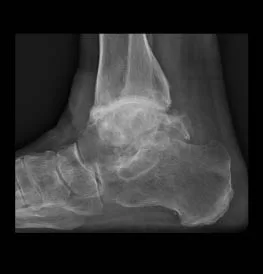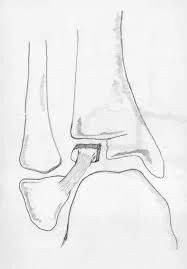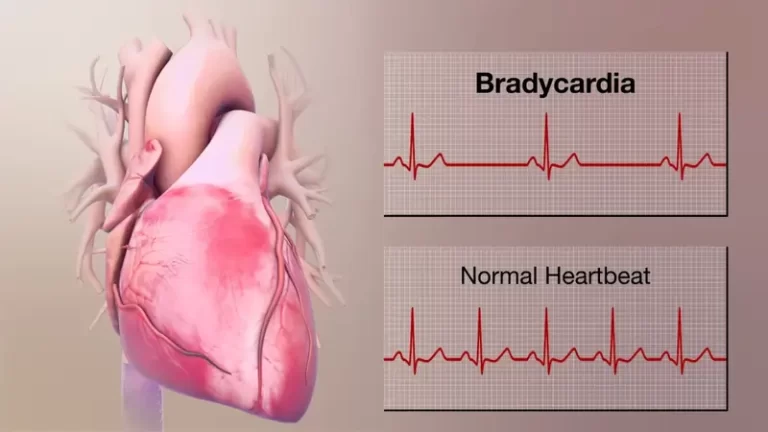What is the Treatment For Hernia
The treatment for a hernia depends on several factors, including the type and severity of the hernia, your symptoms, and your overall health.
An organ or tissue that pushes through a weak area in the surrounding muscle or connective tissue results in a hernia. Common types include inguinal, femoral, umbilical, and hiatal hernias.
Table of Contents
Introduction
- When an organ pulls through the muscle or tissue that surrounds it, a hernia typically develops in the abdomen or groin. It could appear as a strange protrusion that appears and disappears with different activities or in different situations. It might also or might not induce symptoms like pain or discomfort. The majority of hernias require surgical treatment at some point.
What is a hernia?
- A hernia happens when a portion of your internal organs protrudes via a tear in the muscle or tissue that surrounds it. The majority of hernias are caused by an organ in your abdomen pressing through one of the cavity’s walls. As you age and the normal wear and tear on your muscles accumulate, hernias may develop gradually. They may also be the consequence of a congenital defect, surgery, or accident.
What are some common hernia locations?
A hernia might occur:
- Into your diaphragm in your lower chest.
- With the wall of your lower abdomen, in your groin.
- Along the front midline of your abdomen.
- Along with an incision from a previous abdominal operation.
Types of Hernia
Specific types of hernias include:
- Inguinal Hernia: inguinal Seventy-five percent of hernias are of the inguinal variety, which is the most frequent form. Men or those assigned male at birth (AMAB) are primarily affected. They develop when a portion of your colon pushes into the channel that runs down the inside of your thigh.
- Femoral Hernia: A femoral hernia is a less common kind of groin hernia that arises in the femoral canal, which runs underneath the inguinal canal. Tissue rich in fat might protrude.
- Hiatal Hernia: Another frequent kind of hernia that develops during life is a hiatal hernia. It occurs when your stomach’s upper portion pushes up through the diaphragm’s opening into your chest as the aperture where your esophagus goes through grows.
- Congenital diaphragmatic Hernia: This dangerous birth defect occurs when the diaphragm fails to shut completely during fetal development. While the organs are still growing, it might produce stomach pain that packs the lungs.
- Incisional Hernia: An incisional hernia happens when tissue pushes through an abdominal wall incision that was once made but eventually weakened. It is a typical adverse reaction to abdominal surgery.
- Umbilical Hernia: When a portion of your intestine protrudes through a hole in your abdominal wall close to your belly button, it is known as an umbilical hernia. Congenital hernias are those that are present from birth.
- Ventral Hernia: Any hernia that penetrates your abdomen’s front wall is referred to as a ventral hernia. It covers both incisional and umbilical hernias. The term “epigastric hernia” refers to a ventral hernia above the belly button.
- Perineal Hernia: A perineal hernia is the result of tissue or organs pushing through a weakening or opening in the pelvic floor and into the abdominal cavity. These hernias occur seldom.
Symptoms and Causes
What are hernia symptoms?
- Varying types of hernias may induce varied symptoms, and not all hernias create symptoms. A noticeable lump or protrusion that develops during specific activities or in specific physical positions and disappears at other times is one of the telltale signs of a hernia. When the hernia emerges, you might also experience pressure, dull discomfort, or pinching. It might surface when
- You’re coughing, laughing, lifting, or straining.
Risk factors of Hernia
What risk factors contribute to getting a hernia?
A hernia may be more likely to occur if you have:
- An occupation that requires standing for extended periods of time or heavy lifting
- A chronic cough or allergies that induce constant sneezing.
- Chronic constipation and straining to defecate or pee.
- A history of abdominal or pelvic surgery.
- Pregnancy, especially repeat pregnancies.
- Chronic obesity (body mass index [BMI] > 30).
A congenital hernia may be more likely to develop in your child at birth if they:
- Are prematurely born.
- Have cystic fibrosis.
- Have a connective tissue condition.
- Have congenital hip dysplasia.
- Have testicles descending.
- Have additional issues with their urinary or reproductive systems.
Complications of Hernia
What are the possible complications of a hernia?
- Most of the time, problems start when a hernia becomes imprisoned and is unable to move back in. A hernia that is imprisoned might worsen and cause more agony. If it’s your bowel that’s an obstruction that makes it hard to pass food or gas. If the tissue that is imprisoned is deprived of blood flow (strangulation), it may result in necrosis gangrene or tissue death.
- Diaphragmatic hernias have distinct complications. Organs that herniate through your diaphragm usually don’t become stuck. The only real problem associated with a hiatal hernia is persistent acid reflux. Conversely, congenital diaphragmatic hernia (CDH) is invariably complex due to its effect on the development of embryonic organs. Infant newborns with congenital cardiac hypertension require critical care.
Diagnosis and Tests
How is a hernia diagnosed?
- Depending on the type, a basic physical examination can frequently be sufficient to detect a hernia. It might be visible or palpable to your healthcare professional, or it might become apparent when they ask you to cough or change positions. To ascertain the severity, they will try to physically shrink it — make it go back in. Certain hernias can need some kind of diagnosis, using soft tissue imaging methods like CT scanning.
Management and Treatment
What is the treatment for a hernia?
- The majority of hernias will require surgery to repair, though not always immediately. In cases where your mild or minor hernia only rarely protrudes, your doctor might advise you to wait and observe. Because hernias do have a tendency to get worse over time, doctors advise having them repaired. Apart from umbilical hernias in babies, they don’t go away on their own.
- Surgery to repair hernias is frequent and, unless there are problems, a simple operation. Your surgeon will use surgical mesh or stitches to reinforce the barrier that the herniated tissue pushed through and press it back into place. For a regular hernia repair, surgeons can frequently employ minimally invasive techniques, which result in smaller incisions, less pain after surgery, and a quicker recovery.
- A laparoscope, which is a long, thin tube with a lit camera on the end, is used in laparoscopic surgery to view inside the operative site. One tiny hole is used for the laparoscope, while another is used for long, thin surgical instruments. Similar robotic surgery is performed for hernia repair; however, the surgeon uses robotic arms and commands the instruments from a computer console. Certain hernias may necessitate traditional open surgery.
- A congenital umbilical hernia will often close on its own as your child develops, but sometimes it won’t. Your youngster will require umbilical hernia repair in this situation. Repairing a hiatal hernia usually doesn’t need reflux. To fix this issue, your doctor might advise a Nissen fundoplication. Wrapping the upper
sewing the stomach and lower esophagus together.
What happens if a hernia is left untreated?
- A little hernia may not bother you much. Hernias, on the other hand, tend to get bigger over time. The opening continues to weaken and extend, as more tissue forces its way through gradually. The more tissue that pushes through, the more likely it is to become entrapped, causing discomfort and other issues.
What are the treatment’s possible adverse effects or complications?
- There is a minor risk of general surgical problems such as excessive bleeding, wound infection, or anesthetic responses. Some people experience trouble urinating following surgery for a short period of time. Approximately 10% of persons suffer chronic groin pain after inguinal hernia treatment, which could be caused by nerve injury.
Outlook / Prognosis
What can I believe if I have a hernia?
- Your doctor will determine how serious it is and how quickly it will proceed. Some hernias may not require immediate correction, but for the majority, it will be recommended at some point. The surgery is normally performed as an outpatient procedure with a short recovery period. It is almost always effective, although there is a 10% possibility that the hernia can reoccur, especially if the conditions that created it persist.
Living With
How should I look after myself if I have a hernia?
- If you have a hernia and haven’t had it treated yet, you should strive to keep it from worsening. To avoid straining the hernia, your healthcare practitioner may advise you to change your habits or the nature of your work. In rare circumstances, they may advise wearing a special restraint belt to keep it in place during particular activities. Take note of your symptoms and any changes you notice.
FAQs
The phrase “sports hernia” is misleading because it is not a hernia at all. It is a common sort of injury that affects athletes, mainly in the lower abdomen or groin. Hernias are common in these areas, and the injury may cause chronic pain similar to a hernia. However, no tissue protrudes through other tissue. A rip in a tendon or muscle is frequently the result of a rapid twisting movement.
Hernias are frequent in general, while some varieties are more common than others. Inguinal hernias affect around 25% of all men or those born male. Hiatal hernias affect around 20% of adults in the United States, with 50% of those over the age of 50 affected. Congenital hernias, mostly umbilical, affect roughly 15% of babies. Incisional hernias account for around 10% of all hernias, with the other 10% made up of all other forms.
Most aren’t serious, but some are. They might also deteriorate over time. A hernia becomes dangerous when it becomes lodged in the hole it was pushed through and is unable to return. This can be unpleasant, and in severe situations, the tissue might be deprived of blood supply, resulting in necrosis (tissue death). Because hernias deteriorate over time, most will require surgical treatment sooner or later.
When you can see it, it appears to be a bulge where there should not be one. Some common locations include the abdomen and the top of the inner thigh. It may be visible at times but not at others. Some hernias, such as femoral and hiatal hernias, are too deep to be visible from the outside.
When the hernia passes through the aperture, you may not feel anything, or you may feel pressure, a dull discomfort, or a searing agony. If you are frequently in pain, you should consult a doctor straight away. Chronic acid reflux can be caused by a hiatal hernia in particular. You may get heartburn or indigestion.
When you squat, bend over, or push yourself, you may notice or feel a hernia appear in a specific spot. When your infant is crying or pooping, a hernia may appear, and they may be upset about it. A hernia is likely if the same activity consistently generates the same symptoms.
Generally, no, but there are occasional exceptions. A groin hernia, for example, might occasionally enter your sex organs. In persons who have testicles, it may produce obvious scrotal enlargement. Femoral hernias are more common in women or those assigned female at birth (AFAB), and they might produce inexplicable groin pain.
A hernia arises when a weakening or a hole in your muscle or connective tissue permits an organ or other tissue to push past the barrier. Sometimes the weakening or opening is present at birth, but it normally develops over time. It could be caused by a catastrophic accident or surgery, but it’s more likely to be caused by repetitive stress. Years of stress or exertion can wear down the tissue.
Any hernia pain is caused by a visit to your doctor. Many other problems might be mistaken for hernia pain, so it’s critical to have a healthcare expert diagnose it. Seek medical assistance right away if your hernia changes color becomes numb, or produces symptoms such as fever, nausea, and vomiting.







